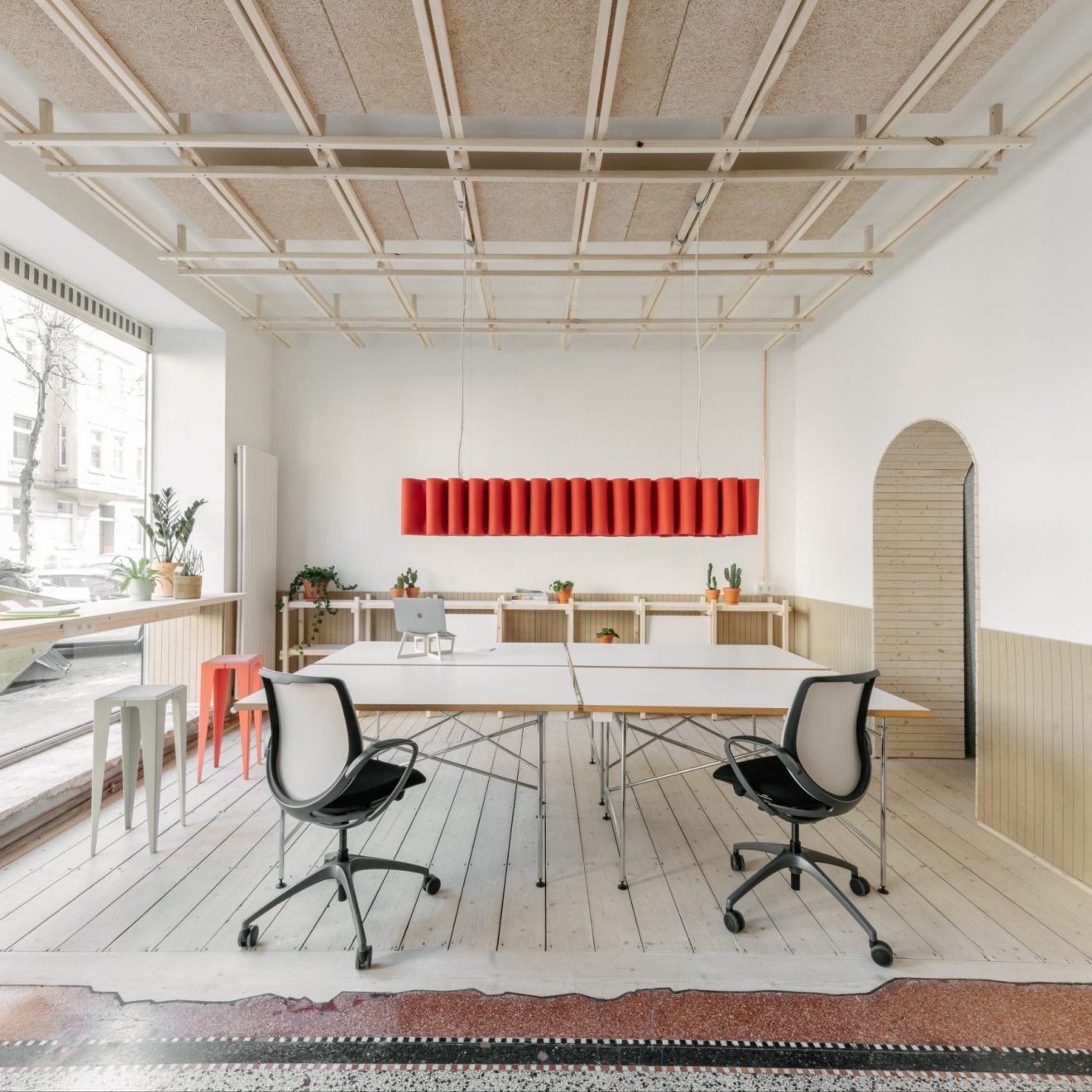
13 July 2023
5 of Our Favourite Sustainable Interiors
Scaffolding Board House by A-Zero Architects. London, United Kingdom.
This terraced house near Whitechapel was designed in alignment with the owners’ ethos on sustainability. The new structure of the two-storey extension is made entirely from recycled scaffolding boards which extend from partition wall to partition wall. It is crammed full of reclaimed and reused materials from in and around the site. The kitchen counter, for example, came from a school science lab.
Mountain View House by CAN Studio. London, United Kingdom.
An Edwardian semi-detached house that has been thermally upgraded throughout. The kitchen and exterior lintel facings use Smile Plastics’ surfaces made from recycled chopping boards, milk bottle tops and microwavea meal trays. Bricks removed from part of the internal brick walls were also relocated to the rear of the garden and used in the patio.

The Circus Canteen by Multitude of Sins, Bengalaru, India.
Every element of this build from the custom lighting, flooring and art installation to the furniture, acquired in a city-wide waste donation project has been individually conceived and refreshed with less than 10% of the materials sourced from new.

The Circular Office by Urselman Interior. Dusseldorf, Germany.
The goal for this circular office was a sustainable interior without a compromise on modern aesthetic. All materials used for this Dusseldorf-based startup are biodegradable, upcyclable or are construction products that have already been in use. The use of adhesives has been avoided and joints have been created mechanically. Interior furnishings can be dismantled and repurposed. All materials are listed on a Material passport and published for future use. The circular office boasts zero waste as all its raw materials can be re-used.

Pizza 4P’s by Red Design. Phnom Penh, Cambodia.
The aim with Pizza 4P’s first restaurant was to create a zero-waste restaurant. Reduce, reuse and recycle all being the name of the game with this project. ‘Our design is an experiment in new thinking about sustainability’- says Red Design of the project. The restaurant features brass signage made from melted down bombs, recycled plastic furniture and partitions formed from reused steel. The company’s sustainability reports are published online, and it is this transparency that makes it the exemplar of sustainable development on Phnom Penh’s burgeoning restaurant scene.

